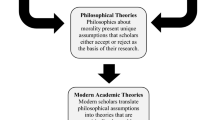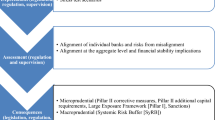Abstract
This study investigates policyholders’ moral hazard from the perspective of switching motivation and determines whether switching behaviour is associated with the expiration effect in Taiwan’s automobile physical damage insurance market. Empirical results show that policyholders who switch to a new insurer early before their prior policy expires are more likely to file a claim in the last policy month—known as the expiration effect—than those who switch upon expiration of their policy and those who renew their contract with the same insurer. The expiration effect for the dealer-owned agent channel is more serious than for the direct underwriting channel. For the direct underwriting channel, the expiration effect for early switchers is more apparent than for normal switchers or renewers. The findings suggest that insurers should pay attention to switching policyholders to mitigate potential opportunistic behaviour by which policyholders switch to other insurers early before their policy expires and then file a claim to evade a surcharge for claims records.
Similar content being viewed by others
Notes
In the automobile insurance market of Taiwan the claim is often filed in the last policy month as encouraged by the representative of dealer-owned agents, who make up the dominant marketing channel of automobile physical damage insurance. Therefore, insurance companies usually allow clients to partly retrieve the premium by filing a claim or making a one-time payment for accumulated losses from several accidents to avoid a surcharge for the bonus/malus coefficient due to multiple claims. Thus the claim is usually filed in the expiration month of the policy; this is referred to as the expiration effect in the literature.
The expiration month of the policy refers to the 30-day period prior to the expiration date. An insurer in Taiwan usually sends a renewal notice to the insured approximately 30 days before the expiration date. Therefore, the insured is classified as an early switcher when insurance is purchased from another insurer more than 30 days before the expiration date, whereas a normal switcher purchases insurance during the 30-day period before the expiration date. For example, if the expiration date is November 30, the insured is viewed as an early switcher if he/she switches to a new insurer before October 30 and as a normal switcher if he/she switches after October 30.
A prevalent phenomenon in Taiwan’s automobile insurance market is that after insuring for policy year t + 1, the new insurer will not check the policyholders’ claims record from the previous insurer again in policy year t.
The starting date of insurance for a new car is usually the issuing date of the motor licence. Thus the starting date of the insurance is usually not identical to the issuing date of the motor licence if the insured purchases insurance for a used car. Therefore, the insured is defined as a newly insured of a used car if they have no insurance records in policy year t, and the effective starting date of the policy they purchase in year t + 1 is not identical to the issuing date of the motor licence.
We mainly analyse the Form B policy for two reasons. First, in Taiwan’s automobile insurance market, the number of Form A policies is small, because most car owners do not select Form A due to the much higher premium. Second, the expiration effect is not a concern for the Form C policy, which only covers vehicle collision.
We thank a referee for pointing out this concern.
The overall percentage of motor insurance from dealer-owned agents was 83.40% in 2011 and 85.30% in 2012.
References
Abbring, J.H., P.-A. Chiappori, and J. Pinquet. 2003. Moral hazard and dynamic insurance data. Journal of the European Economic Association 1 (4): 767–820.
Boyer, M., and G. Dionne. 1989. An empirical analysis of moral hazard and experience rating. The Review of Economics and Statistics 71 (1): 128–134.
Carroll, S., and A. Abrahamse. 2001. The frequency of excess auto personal injury claims. American Law and Economics Review 3 (2): 228–250.
Chiappori, P.-A., F. Durand, and P.-Y. Geoffard. 1998. Moral hazard and the demand for physician services: First lessons from a French natural experiment. European Economic Review 42 (3–5): 499–511.
Chiappori, P.-A., and B. Salanie. 2000. Testing for asymmetric information in insurance markets. Journal of Political Economy 108 (1): 56–78.
Derrig, R.A., D.J. Johnston, and E.A. Sprinkel. 2006. Auto insurance fraud: Measurements and efforts to combat it. Risk Management and Insurance Review 9 (2): 109–130.
Dionne, G., and R. Gagné. 2002. Replacement cost endorsement and opportunistic fraud in automobile insurance. Journal of Risk and Uncertainty 24 (3): 213–230.
Dionne, G., C. Gouriéroux, and C. Vanasse. 2001. Testing for evidence of adverse selection in the automobile insurance market: A comment. Journal of Political Economy 109 (2): 444–453.
Dionne, G., and K.C. Wang. 2013. Does insurance fraud in automobile theft insurance fluctuate with the business cycle? Journal of Risk and Uncertainty 47 (1): 67–92.
Gujarati, D.N. 2004. Basic econometrics, 4th ed. New York: Tata McGraw-Hill.
Li, C.-S., C.-C. Liu, and S.-C. Peng. 2013. Expiration dates in automobile insurance contracts: The curious case of last policy month claims in Taiwan. The Geneva Risk and Insurance Review 38 (1): 23–47.
Li, C.-S., C.-C. Liu, and J.-H. Yeh. 2007. The incentive effects of increasing per-claim deductible contracts in automobile insurance. The Journal of Risk and Insurance 74 (2): 441–459.
Pao, T.-I., L.Y. Tzeng, and K.C. Wang. 2014. Typhoons and opportunistic fraud: Claim patterns of automobile theft insurance in Taiwan. The Journal of Risk and Insurance 81 (1): 91–112.
Richaudeau, D. 1999. Automobile insurance contracts and risk of accident: An empirical test using French individual data. The Geneva Papers on Risk and Insurance Theory 24 (1): 97–114.
Riphahn, R.T., A. Wambach, and A. Million. 2003. Incentive effects in the demand for health care: A bivariate panel count data estimation. Journal of Applied Econometrics 18 (4): 387–405.
Shavell, S. 1979. On moral hazard and insurance. The Quarterly Journal of Economics 93 (4): 541–562.
Schlesinger, H., and J.-M.G. von der Schulenburg. 1993. Consumer information and decisions to switch insurers. The Journal of Risk and Insurance 60 (4): 591–615.
Tennyson, S. 1997. Economic institutions and individual ethics: A study of consumer attitudes toward insurance fraud. Journal of Economic Behavior & Organization 32 (2): 247–265.
Wang, J.L., C.-F. Chung, and L.Y. Tzeng. 2008. An empirical analysis of the effects of increasing deductibles on moral hazard. The Journal of Risk and Insurance 75 (3): 551–566.
Author information
Authors and Affiliations
Corresponding author
Additional information
Publisher's Note
Springer Nature remains neutral with regard to jurisdictional claims in published maps and institutional affiliations.
Rights and permissions
About this article
Cite this article
Liu, CT., Wu, JY. & Chang, CH. Switching motivation and moral hazard: evidence from automobile physical damage insurance in Taiwan. Geneva Pap Risk Insur Issues Pract 45, 361–391 (2020). https://doi.org/10.1057/s41288-019-00158-2
Received:
Accepted:
Published:
Issue Date:
DOI: https://doi.org/10.1057/s41288-019-00158-2




